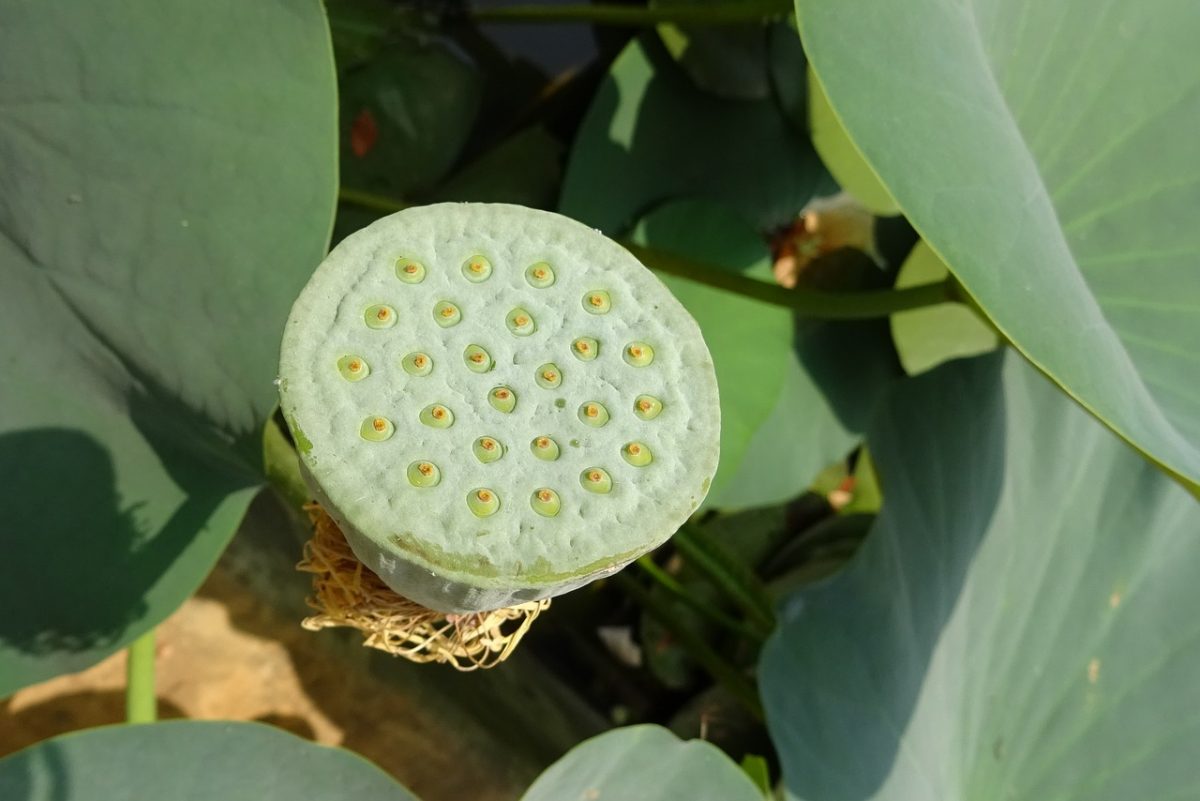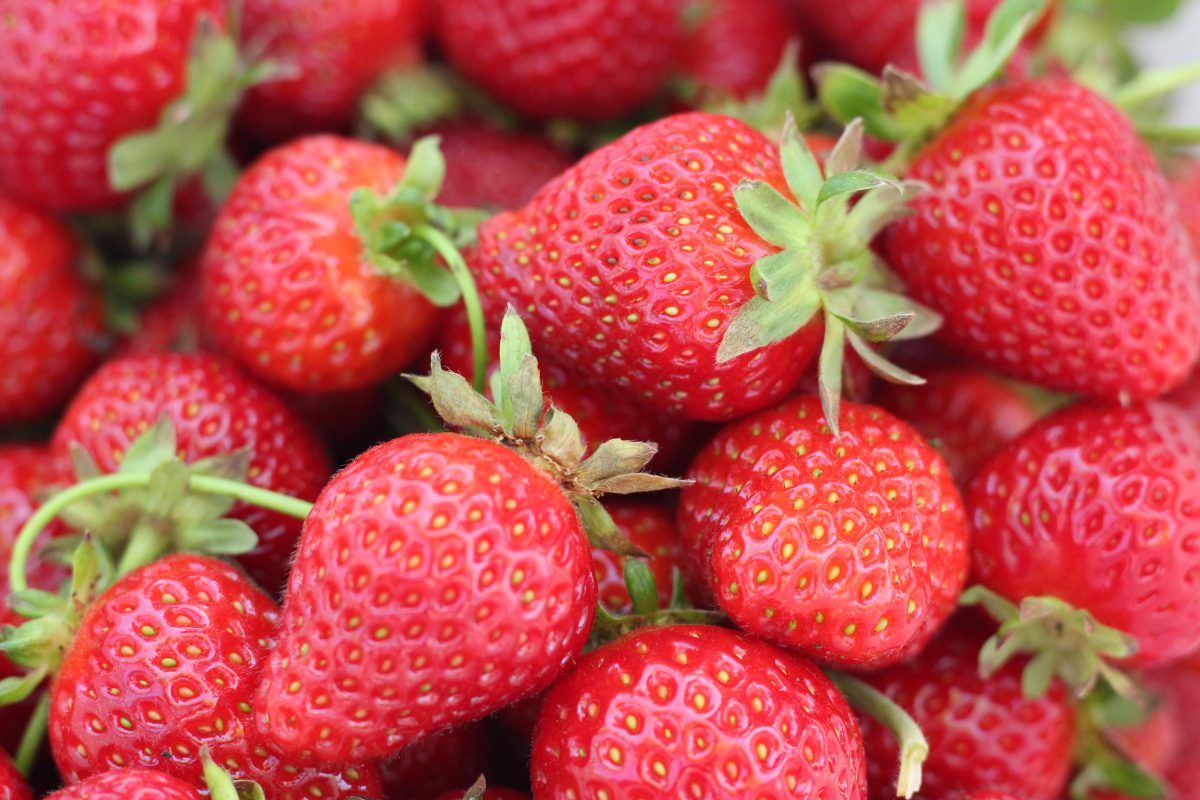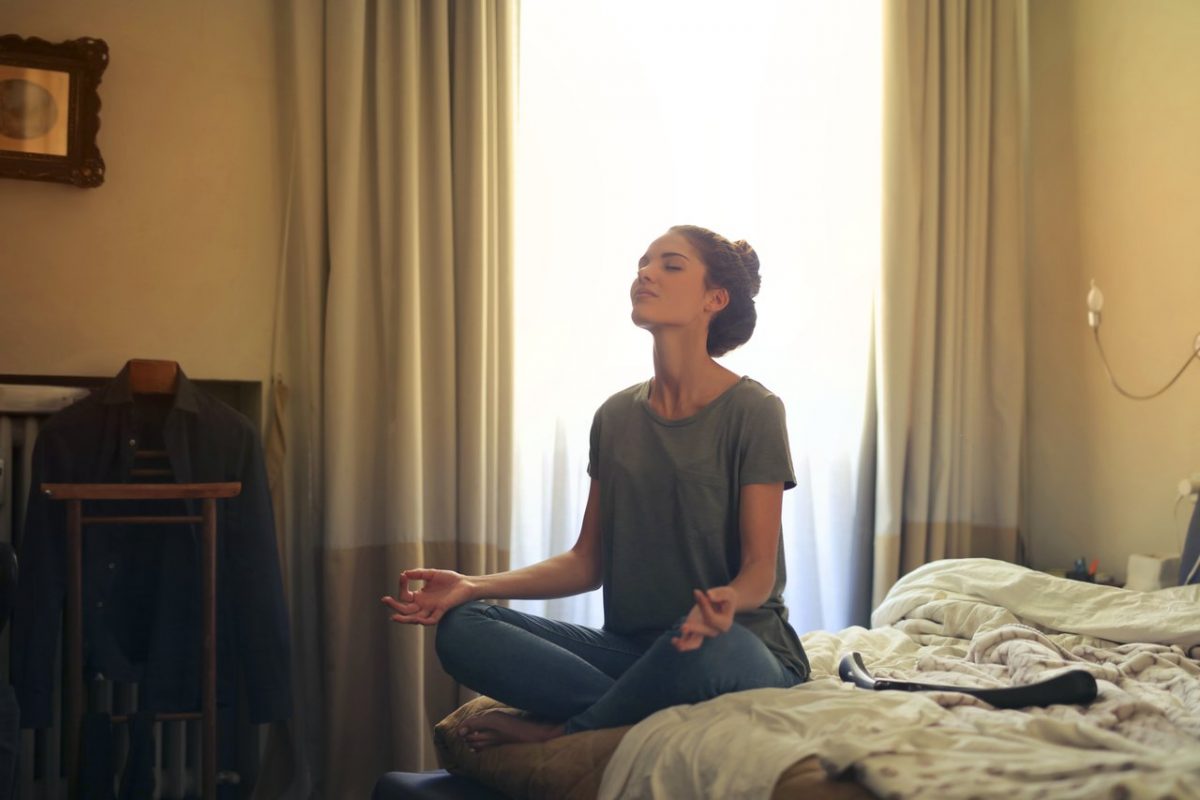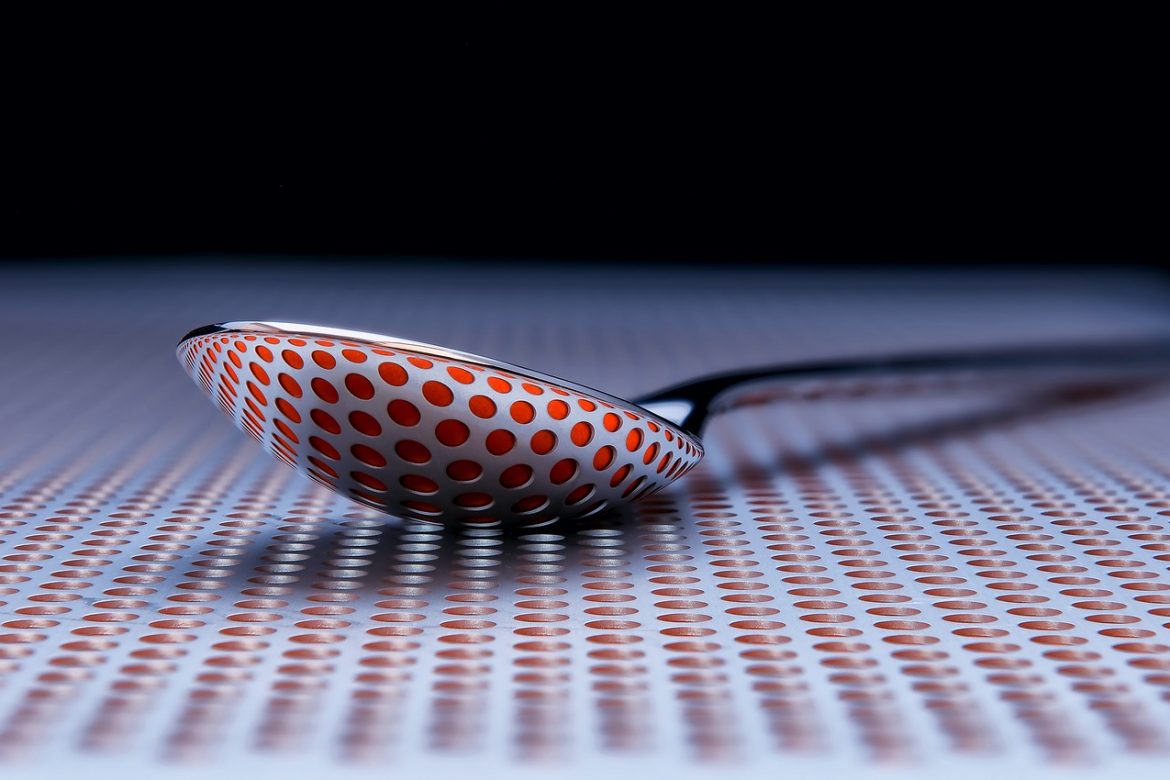For the average person, trypophobia simply means having a fear of holes. However, there are many important things to consider when it comes to this particular fear or phobia. It is more than mere disgust, which is a common misconception that a lot of people have when it comes to the condition. After all, much research still needs to be done on the subject itself, so there is still a lot we may not know about trypophobia.
Trypophobia Definition: What’s in the Pattern?


Do you feel queasy whenever you look at a tightly-packed cluster of holes, such as those seen on a lotus seed pod? Do you feel the same way whenever you look at the seeds on a strawberry? If these things causes you discomfort, then you might have trypophobia.
Common Triggers:
- Sponges
- Coral
- Soap bubbles
- Clusters of eyes usually found in insects
- Circular patterns
- Honeycomb
- Sea sponges
- Clusters of dots
- Holes in skin, such as pores
- Beehives
- Seed pods
- Bubbles
- Clusters of seeds
- Lotus seed pod (one of the most common)
- Hole-like patterns on an animal’s coat or scales
- Flower heads with tightly-packed seeds
While the condition is not officially recognized by the American Psychiatric Association’s (APA) Diagnostic and Statistical Manual of Mental Disorders (DSM-5), it is thought to be triggered by the pattern of small holes that are clustered together.
Common Symptoms of Trypophobia:
- Goosebumps
- Feelings of discomfort
- Repulsion
- Distress
- Visual discomfort such as illusions or distortions
- Anxiety
- Nausea
- Trembling of the body
- Cold sweat
- Itchiness
- Rapid breathing
In some cases, vomiting may also be induced by the condition, but such instances tend to be rare. Many of the condition’s symptoms are related to fear or disgust, but research suggests that there’s always a greater feeling of the latter.
There might also be behavioral changes in the person experiencing the condition. The most common is their avoidance of the trigger objects/visuals. For example, they might avoid eating food like strawberries or bubble tea. This could also lead to them avoiding certain places where there’s a presence of trigger visuals.
Fact or Fiction: Is Trypophobia Real?


At present, there remains to be some debate among experts in the field when it comes to whether trypophobia is a real condition. The earliest known reports of the condition were described in an online forum back in 2005, but it is yet to be recognized as an actual diagnosis by the APA.
In one case report, a 12-year-old patient described feelings of discomfort whenever she saw objects or surfaces that were covered in holes. When this patient was asked to draw a picture of what she feared, the young girl filled a piece of paper with repetitive clusters of round dots.
It is important to note that research involving children often lead to similar results. Their discomfort is not due to an association with danger, but because of the pattern itself.
Is the condition common?
Much is unknown about trypophobia, including its prevalence. However, the current research points to it being quite a common occurrence among people. In a study published in Psychological Science back in 2013, 16% of participants described similar feelings of discomfort or disgust when shown the image of a lotus seed pod.
What are Phobias?
Phobias are more than just being afraid of something. People who suffer from a type of phobia experience intense fear of a situation or an object. They believe that it will cause them harm, even if the chances of that happening is quite low. It differs from your usual fears because a phobia will cause extreme distress and might hinder a person from functioning normally.
This is because they are more than likely to avoid the situation or object—even if that means changing up their routine. To be more specific, phobias are a kind of anxiety disorder and are also more common than most would believe. It is estimated that around 30% of adults in the United States have a phobia or will have one at some point in their lives.
The word phobia comes from the Greek word Phobos, which means terror or horror.
Common Types of Phobias:
- Acrophobia – the fear of heights
- Arachnophobia – the fear of spiders
- Aerophobia – the fear of flying
- Autophobia – the fear of being alone
- Astraphobia – the fear of thunder and lighting
- Claustrophobia – the fear of crowded or confined spaces
- Hydrophobia – the fear of water
- Homophobia – the fear of blood
- Ophidiophobia – the fear of snakes
- Zoophobia – the fear of all animals
Note that when it comes to irrational fears, some of them can’t always be easily explained. There are such things known as weird phobias; the more unusual they are, the more unreported they go. This is because the people who have them may often feel embarrassed about speaking up or asking for help.
Uncommon and Weird Phobias:
- Onomatophobia – the fear of names
- Alektrophobia – the fear of chickens
- Nephophobia – the fear of clouds
- Pogonophobia – the fear of beards
- Cryophobia – the fear of ice or of the cold
- Xanthophobia – the fear of the color yellow
- Turophobia – the fear of cheese
- Somniphobia – the fear of falling asleep
- Coulrophobia – the fear of clowns
- Hylophobia – the fear of trees
- Hierophobia – the fear of all things sacred or of holy individuals
And that’s just a short list of the most unusual phobias that some people have. With these in mind, the fear of holes doesn’t seem too bad, doesn’t it? These irrational fears are constantly being studied in order to help those who suffer from them. But we can’t help but wonder—what is the weirdest phobia known to experts? In our opinion, it has to be Papaphobia, or fear of the pope!
Possible Causes of Trypophobia


Now that we’ve learnt more about phobias and how they can sometimes have unusual roots, what are the possible causes for these irrational fears to surface? When it comes to the fear of holes, research remains limited. As such, the information we do have is primarily theoretical.
1. Evolutionary Response
One such theory is that the fear of holes is an evolutionary response to all things associated with disease. Disease and sickness are perceived as synonymous to danger, after all.
The appearance of various infectious conditions, diseased skin, and parasites are often characterized by clusters of holes or bumps. This is no different from how a lotus seed pod looks like, which could be why it triggers the fear response.
This theory is the most popular among researchers, as it explains why those who have trypophobia experience more disgust instead of fear whenever triggered.
2. Association with Dangerous Animals
Aside from the evolution theory, another popular notion suggests that trypophobia is brought on by associations with dangerous animals. This is because the appearance of hole-y patterns bear a resemblance to the coat patterns on a number of venomous animals. The theory suggests that people who experience more fear than disgust upon seeing these patterns unconsciously associate the two together.
The Honeycomb Study
A 2013 study observed the correlation between how trypophobic people responded to certain stimuli compared to those who don’t have the condition. For example, when observing a honeycomb, those who didn’t have the condition associated it with bees or honey. On the other hand, those who had a trypophobia associated the honeycomb with other dangerous animals, such as rattlesnakes.
Most of the time, they are not consciously aware of the association. This is what leads to mixed feelings of fear and disgust.
3. Response to Visual Patterns
Then there are those who believe that the queasiness and fear people feel upon seeing clusters of holes is nothing more than a natural response to the patterns themselves. In another study published by Psychological Reports, the results show that most of the time, a person’s discomfort is directly linked to the visual characteristic of the object. This is in contrast to the associations that were previously mentioned.
It is this notion that shrouds trypophobia with doubt. Is it an actual phobia or simply an individual’s natural response to a certain type of stimuli?
Possible Link to Other Disorders
When it comes to risk factors, not much is known that can be linked to the condition. However, a 2017 study did learn that there might be a possible link between trypophobia and generalized anxiety disorder, along with major depressive disorder. This is on top of the fact that some trypophobia symptoms can be quite persistent and might lead to dysfunctions in a person’s daily life.
Trypophobia Test: How Can You Get Diagnosed?
When it comes to diagnosing any phobia, you must do so with a licensed doctor. They would ask you a series of questions related to your symptoms and take into consideration your psychiatric, medical, and social history.
Do know that because the fear of holes isn’t officially recognized as a phobia by mental and medical health associations, it is not a diagnosable condition just yet.
You can experiment, however, and look through a series of images to see what feelings it might trigger. Do understand that this test is meant to measure your reaction and not diagnose whether you have the condition or not. Here’s a trypophobia test that we recommend in case you’re interested in measuring your own reactions.
Treatments for Trypophobia


Since there is still a lot of research needed when it comes to trypophobia, there is no standard treatment used for it. Instead, there’s a whole collection of treatments already in use for other types of phobias that have been proven to ease the condition’s symptoms. Here are some of them.
1. Exposure Therapy
As the name suggests, this refers to slowly exposing a person to the thing they fear most. The idea is that by doing so, their fear would lessen, as will the symptoms. Do note that this is something done very gradually. An individual who has a fear of small holes can start with imagining what they fear first before they move on to looking at a photo of it.
The better they are when it comes to dealing with their fear, the greater their exposure becomes. Remember that when using this treatment, slow is always better. You wouldn’t want to accidentally trigger the individual or yourself, if you’re doing this as a practice to help you overcome your own fears. Make sure observe and write down notes each time as well.
2. CBT or Cognitive Behavioral Therapy
This treatment requires working with a therapist you trust, in order to change any underlying thoughts that may be contributing to your trypophobia. If this is your first time speaking with a therapist, discussions commonly center on any unrealistic thoughts (and fears) that you have before slowly replacing these with more realistic ones. Eventually, this will lead to changes in your overall behavior too.
We have defined phobias as an irrational fear of an object or a situation. So, think about what it is about small clusters of holes that you are afraid of or disgusted by. Is it the possibility of infectious disease? Or simply its appearance? By learning about your fear from its very core, you can learn to change the way you perceive it as well.
3. Meditative Techniques
Tryophobia can cause anxiety—enough to hinder a person from functioning as they normally would. For this, meditation and other related relaxation techniques would be very helpful. Some of the most accessible practices includes deep breathing and visualization.
Deep breathing is the practice of paying more attention to how you breathe. Give this simple exercise a try:
- Close your eyes and sit comfortably.
- Rest your arms on your lap or on either side of your body.
- Take a deep breath and count to three slowly.
- Exhale as you count to three again.
- Repeat this as necessary.
On the other hand, visualization requires a bit more focus. This involves picturing situations that are soothing to you. This could be your favorite place in the city, a vacation spot you fell in love with, or the sky before dawn breaks. It could be anything as long as it brings you calm.
Practice any of these techniques whenever your trypophobia is trigged. They may be able to help you cope with the symptoms and distract your mind from the stimuli. Of course, it might take a bit of practice, so just keep at it.

